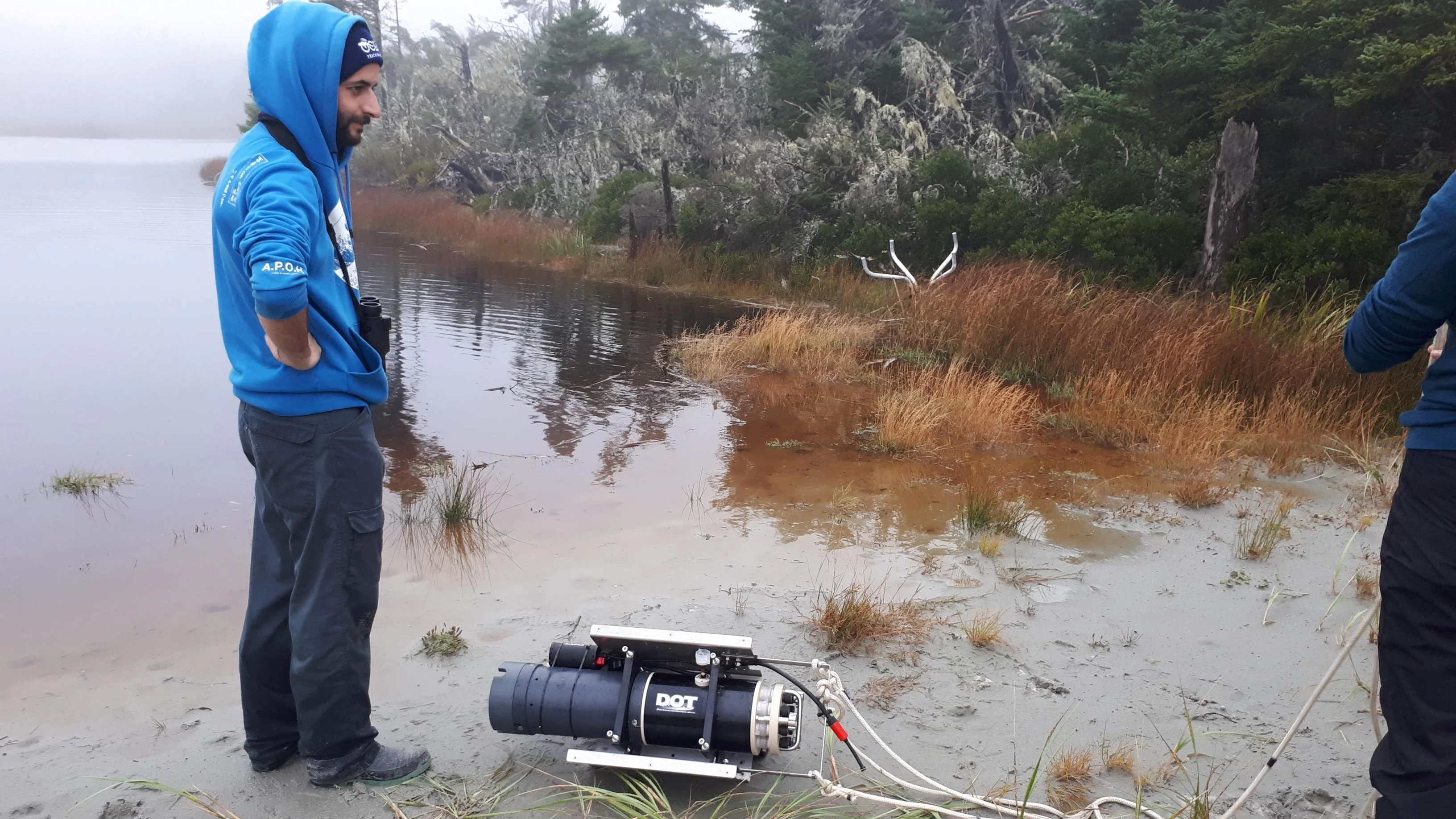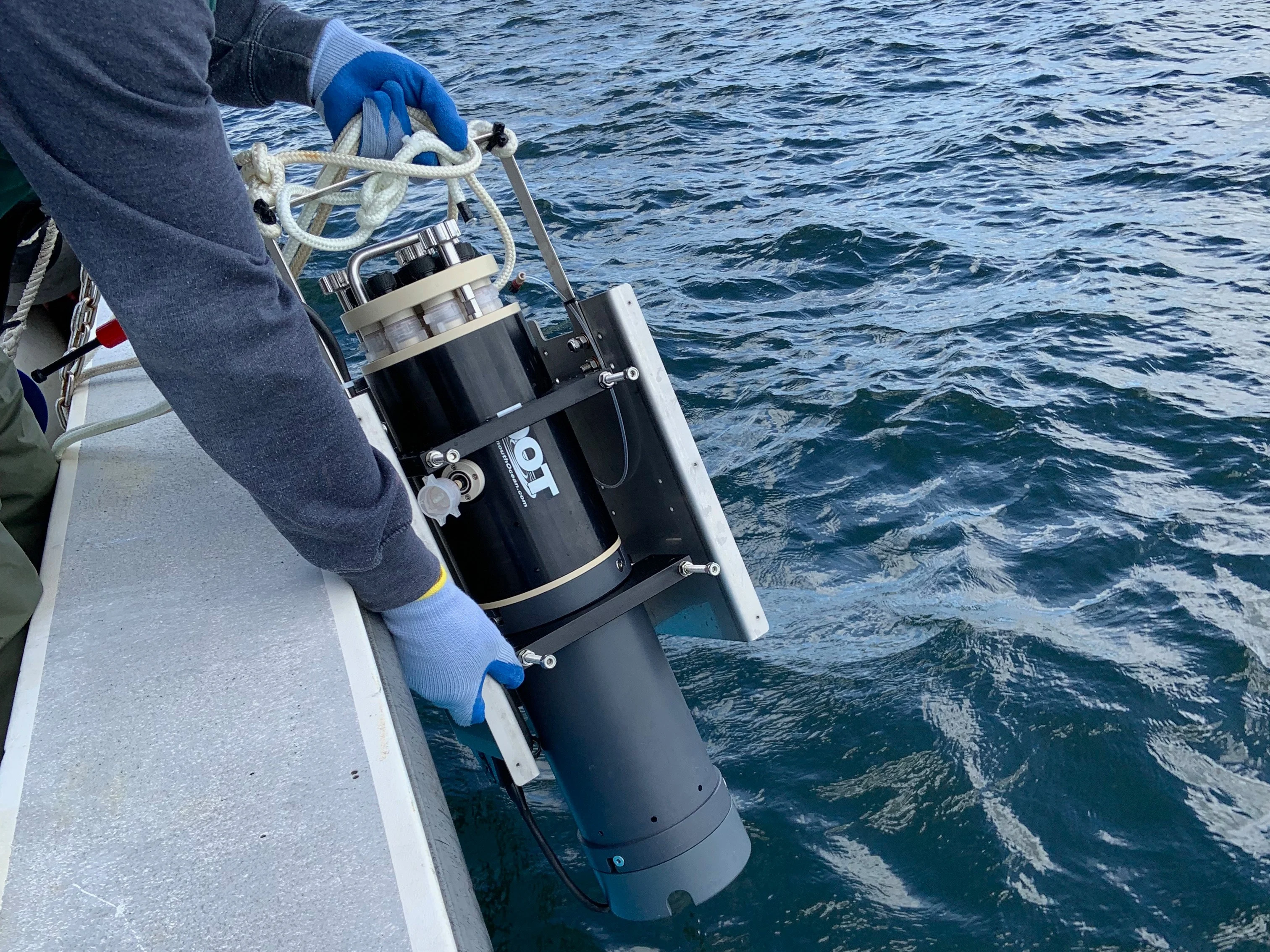
Monitoring human impacts on the ocean just got easier and cheaper
Nova Scotia researchers say their automated eDNA sampler provides a set-it-and-forget-it way of monitoring the impacts of power plants, and other human activities, on ocean biodiversity.
Hydroelectric dams can sever the links between feeding and spawning zones for freshwater fish. Meanwhile, offshore wind power developments can have a complex relationship with the waters they call home, protecting areas against trawling while also posing a threat to some seabirds through habitat displacement or collisions.
Monitoring the effects that these energy projects, and other human activities, have on biodiversity can be difficult. However, over the past few years, environmental DNA (eDNA) has been floated as a way to do just that.
In short, eDNA provides a snapshot of an area’s biodiversity. It involves taking a sample from an environment, say water from nearby a floating wind operation, then filtering out and sequencing the bits of organic matter that resident flora and fauna leave.
But it takes more than a single sample taken from a single day to get the full picture of how human activity changes biodiversity in an ecosystem.
“When you send a system out, you don’t want to just have to collect it the next day. You want it to have room to sample or collect water once a month, or once every week. So that gives you a timeline,” Andre Hendricks, a masters student at Dalhousie University’s department of electrical and computer engineering, told The Weather Network.

The Dartmouth Ocean Technologies automated environmental eDNA sampler getting lowered into the water in 2022. (Dartmouth Ocean Technologies)
Hendricks and a team of researchers based in Nova Scotia believe they’ve created an easy, cost-effective and automated way to address this issue in aquatic environments, a machine dubbed the Dartmouth Ocean Technologies (DOT) eDNA sampler.
The machine is a collaboration between DOT and Dalhousie University researchers. Its creators say it can collect, filter and store nine eDNA samples from the water, taken at regular intervals, like it’s on a timer. The team tested the DOT eDNA sampler against more conventional, manual sampling, and published the results in a recent paper.
An energy company could use the machine to autonomously measure biodiversity change over time at different locations in or near its operations. This could save them a good deal of money and time by reducing the number of times they need to send out boats to testing sites, particularly ones that are hard to reach. Hendricks added that the machine could also be used to track things like coral reef restoration.
The paper also notes there are machines that do similar things on the market, such as the Monterey Bay Aquarium Research Institute’s Environmental Sample Processor, which can collect and store 60 samples. However, these often come with a huge cost. The Monterey Herald reported the machine costs $200,000 USD. Meanwhile, the DOT eDNA sampler comes with a $55,000 USD price tag, according to the paper.
WATCH BELOW: Take a ride in a mobile lab measuring air pollution
To study the machine’s effectiveness, Hendricks and his colleagues took it out to six collection sites in the nearby Bedford Basin. The team ran the machine at each of these sites, letting it draw up a sample from the water column, filtering out the eDNA, and storing the sample in its body, before decontaminating itself using diluted hydrochloric acid.
At the same time, immediately next to the DOT eDNA sampler at each site, the team manually collected samples using a specialized plastic tube. From there, the team filtered the eDNA from these control samples, before freezing them in liquid nitrogen to preserve them.
Finally, the team sent samples from both methods to the Integrated Microbiome Resource Lab at Dalhousie, where scientists sequenced the eDNA to check for the presence of various microorganisms.
In all, the research found the automated method worked almost as well as the manual method, though the machine didn’t draw in enough sample water at the first two sites as its filters clogged with excess matter from the water. However, both methods were able to collect eDNA of the top 10 microbe families in “identical relative abundance,” according to the paper.
While the paper looks at microbial life, the authors said that they are looking into deploying it to check for eDNA from fish or even whales in the future. Further, while the machine is geared toward testing water, it could one day be used to test for eDNA in air or soil, according to Connor Mackie, one of the paper’s authors and a junior scientist at the DOT.
“It may be in the future.... It would take some reconfiguring for sure,” she told The Weather Network.
Thumbnail Image: The Dartmouth Ocean Technologies environmental DNA sampling machine being tested in 2022. (Dartmouth Ocean Technologies)







